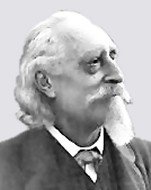|
Introduction - What is sexual behavior?
|
|
History of the Term 6
|
|
|

|
|
Paolo Mantegazza
(1831-1910), an Italian physician and anthropologist, published a famous scientific "Trilogy of Love", i.e. the three volumes "Fisiologia dell' amore" (Physiology of Love, 1872), "Igiene dell' amore" (Hygiene of Love, 1877), and "Gli amori degli uomini" (The Loves of Mankind, 1885). The English translation of this latter book replaced the word “amori” (loves) with “sexual relations".
|
|
|
At the beginning of the 19th century the new noun "sexuality" appeared in the scientific discussion. Again, at first this word referred only to the quality of being male or female. Within a few decades, however, it was also used to denote a preoccupation with sexual matters, and finally it came to mean the possession of sexual powers or the capability of erotic feelings. “Sexuality” now meant more than maleness or femaleness, and it was not necessarily always related to male-female encounters or to reproduction. Even solitary masturbation could now be perceived as "sexual" behavior, i.e., as an expression of someone's "sexuality".
A good illustration of this conceptual shift is provided by the English translation of an important Italian book of that period: Mantegazza’s study of foreign sexual customs (“Gli amori degli uomini”) was translated into English as “The Sexual Relations of Mankind”. The fact that “amori” (loves) was replaced by “sexual relations” marks the triumph of modern sex research over the traditional approaches to the subject. In other words, the ancient ars amatoria (art of love) was cast aside in favor of a new scientia sexualis (science of sex). "Love" mysterious and ever elusive, seemed too vague, poetic, and emotional a subject to be approached by science. In its place now appeared "sex" a more technical and neutral, less confusing subject that could be examined in a more sober and controlled fashion. "Love" had lent itself to philosophizing, "sexual relations" could be classified and counted.
|
|
|
|
|
American edition of Mantegazza's "Gli amori degli uomini".
|
|